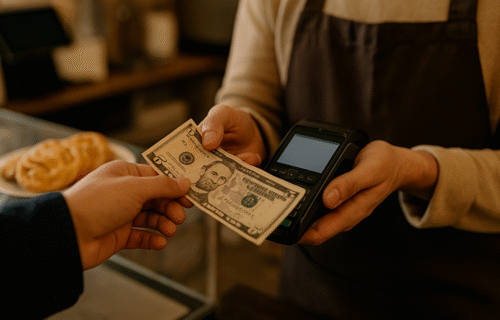In a country known for innovation and global financial power, it remains surprisingly common for customers to be told they can’t pay by card. Across the United States, small pastry shops, family-run cafés, and local diners continue to rely on cash. The persistence of paper money in one of the world’s most advanced economies reflects deep-seated resistance to change in the American banking system.
The U.S. operates through a network of thousands of regional banks and credit unions, each with its own systems and fees. This decentralised model, while historically tied to local economic independence, has become a major obstacle to modernisation. The Federal Reserve’s FedNow service — created to enable instant money transfers — has seen limited uptake, with only a fraction of banks connected so far. Smaller institutions cite the cost and complexity of upgrading systems as barriers, leaving most payments to move slowly through outdated networks.
For small businesses, card payments have become a costly necessity. Transaction fees charged by card companies have reached record levels, eating into already thin margins. Many business owners say that for low-value purchases — a cup of coffee or a pastry — accepting cards simply doesn’t make sense. In contrast, other parts of the world have reduced transaction costs to almost zero. In Brazil, for example, digital transfers through the national Pix network are nearly instantaneous and inexpensive.
Industry groups representing card providers and payment processors have pushed hard against reforms that could reduce their profits. Proposals to cap transaction fees or require banks to connect to unified systems have faced years of lobbying and delay. Critics argue that this influence has left the United States dependent on an inefficient patchwork of private payment networks that benefit a few large players while holding back innovation.
Meanwhile, other regions are racing ahead. In Europe, instant payments are now a standard feature across much of the continent, supported by regulation that ensures interoperability between banks. In India, a government-backed digital payment platform processes billions of transactions every month, and in China, mobile wallets dominate daily life. Even smaller economies such as Thailand and Kenya have leapfrogged ahead of the U.S. in digital payment adoption.
For American consumers, the result is a slower, more expensive, and often more frustrating experience. Sending money between banks can take several days, and transferring funds abroad can involve multiple intermediaries and high fees. Even popular mobile apps like Venmo or Zelle ultimately depend on the same traditional clearing systems that prevent instant access to cash.
Efforts to reform the system are underway but face an uphill battle. The Federal Reserve hopes to expand its real-time payments network in the next year, and a handful of major banks are experimenting with digital settlement systems that use blockchain technology. Yet without a unified national approach or regulatory push, the transformation of U.S. payments may remain more aspiration than reality.
CIJ EUROPE View: The slow progress of payment reform in the United States shows how innovation can be stifled by fragmentation and entrenched financial interests. While countries across Europe and Asia have embraced digital payments as a public good, the U.S. remains caught between outdated infrastructure and political inertia. Until the system aligns around shared standards, small pastry shops will continue to rely on cash — not because they want to, but because the future of digital payments in America is still stuck in the past.
